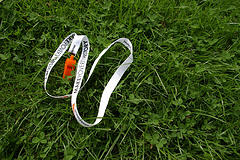1. The man told a story
| Subject | Verb | (Indirect Object) | (Direct Object) | (How) | (Where) | (When) |
| We |
had | a football championship | ||||
| The coach | made | me | play | barefoot |
 |
| By Daveybot. C. Commons |
So that you notice how word order in English works, try to do the same with the following sentences from the story:
|
The referee decided to stop the game temporarily My father breathed a sigh of relief (under the bridge) A flash of lightning stuck a bench on the right side of the park |
1. Paco / a / mac / was / in England / wore / when / he .
.
2. a/ The / in / football / football / team /man / played.
.
3. could / objects / flying / see / They / some / their/ heads / over.
.
4. All / very / them / excited / got / of.
.
As you know, apart from modal verbs, there are two kinds of verbs: regular and irregular. Let's remember the difference between them! Regular verbs form the past simple and past participle by adding suffix -ed to the bare infinitive. On the contrary, irregular verbs have their own past simple and past participle forms and must be learnt by heart!
| |
Bare infinitive | Past Simple | Past Participle | Revision |
| Regular verbs |
decide want study agree |
decided wanted studied agreed |
decided wanted studied agreed |
(Video) |
| Irregular verbs |
be do have come |
was/were did had came |
been done had come |
List of irregular verbs1 |

|
1
The irregular verbs in the list have been divided into 15 tables according to difficulty and use. When you learn them, begin from table I onwards.
|
|
You can practice how to add suffix -ed to regular verbs to form the Past Simple and Past Participle forms by clicking here (Make sure which the bare infinitive is!!!).
Watch the video on the right to review some of the most frequently-used irregular verbs!
|
|
However, this film has nothing to do with tongue-twisters. A tongue-twister is a phrase designed to be difficult to articulate properly. They are very frequently used to improve the pronunciation of sounds in English. The photograph on the right shows the hardest twister in the English language according to the Guiness World Records.
